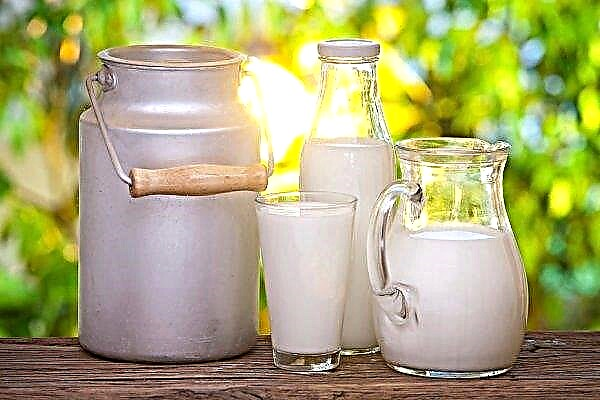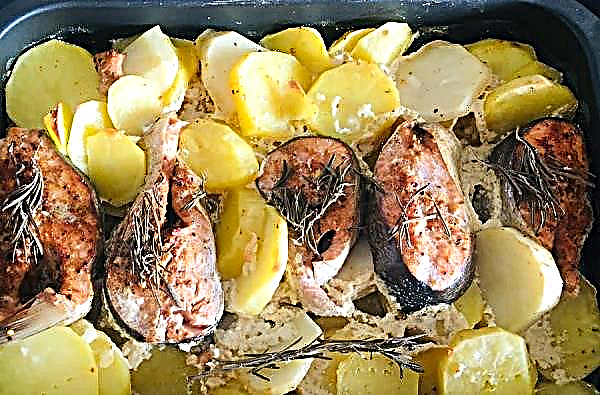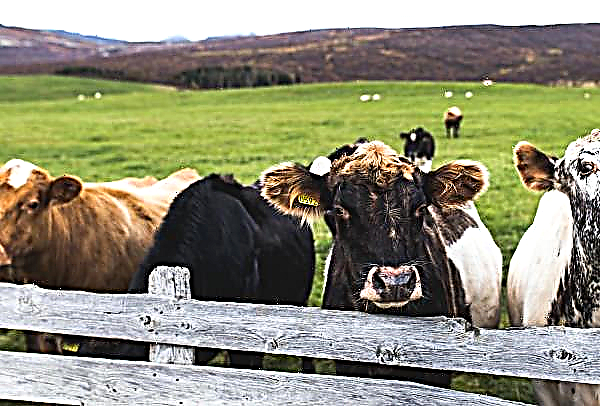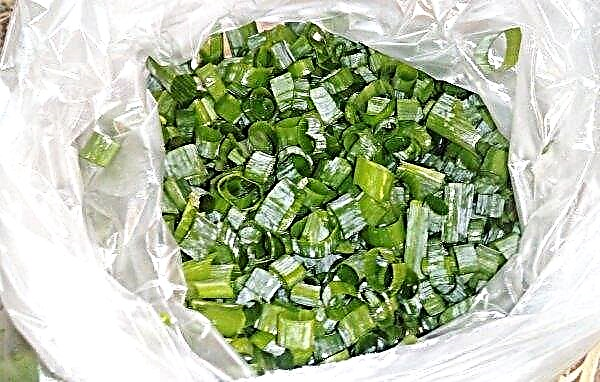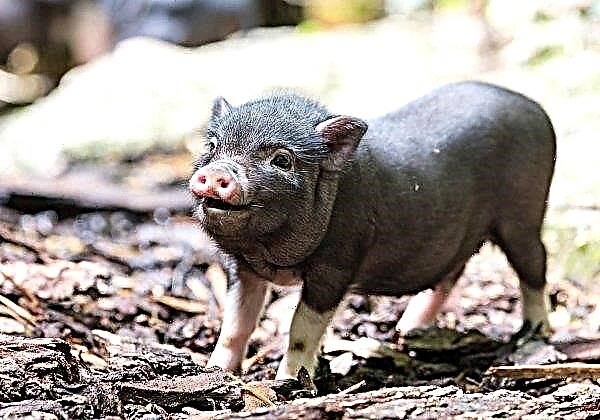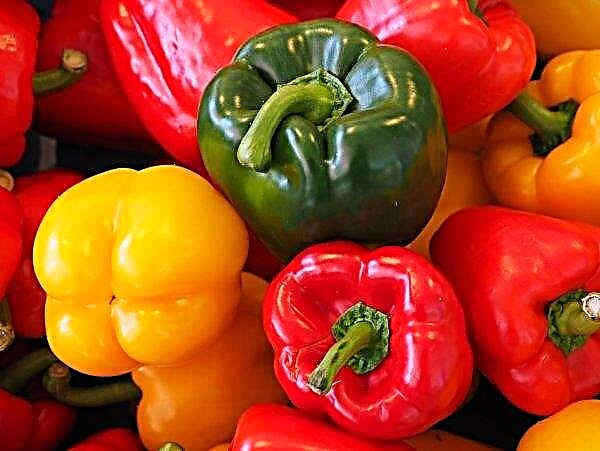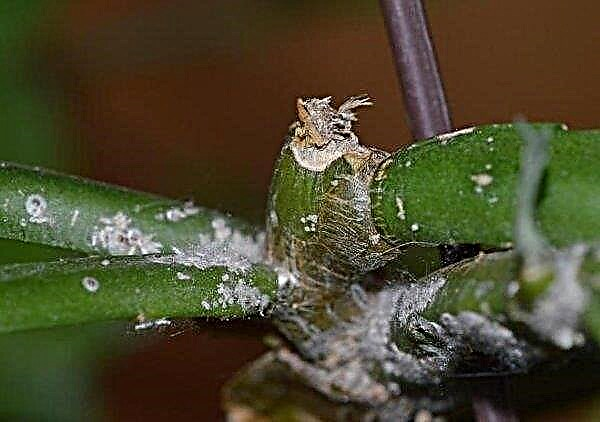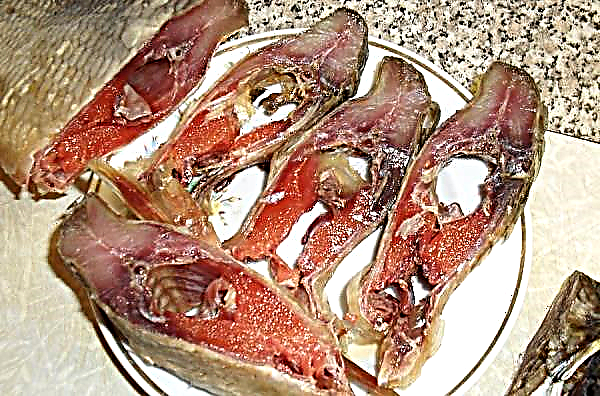Kalanchoe as a succulent plant is unpretentious in care. However, with a gross violation of the rules of care, problems cannot be avoided - the flower will take an unsightly appearance, and its foliage will begin to dry and fall off. The article is devoted to elucidating the causes of falling leaves of Kalanchoe, as well as measures that must be taken in this case.
Causes of leaf fall in Kalanchoe
The main reason for the sudden fall of foliage in Kalanchoe is the incorrect content of the culture during the dormant period (from October to February). Kalanchoe does not tolerate high or too low temperatures, as well as dry warm air. Trouble can occur when the flower is in a stuffy place, for example, next to a heating source.
Did you know? In the Old World, the healing properties of Kalanchoe were not known until the middle of the 20th century. As a medicine, the flower was first investigated and tested by Ukrainian medical scientists.
Kalanchoe drops leaves for a number of other reasons:
- Excessive watering. Due to the fact that Kalanchoe can accumulate moisture in the leaves, overfilling of the soil is fraught with weakening and falling of foliage.
- Inadequate watering. Similarly, a flower responds to prolonged drought.
- Errors in lighting mode. Falling solely on top leaves indicates a lack of sunlight. Uniform drying along the entire length signals an excess of lighting.
- Pot size. If the root system does not have enough space in the container, the flower will soon begin to dry out.
- Poor water performance (high water hardness).
- The defeat of fungal infections and the attack of insect pests.

Possible pests and diseases of the plant and ways to combat them
Provoke dropping foliage of Kalanchoe can insect parasites and diseases. Consider methods for eliminating them.
Aphids on Kalanchoe
Aphids are an insidious pest that activates activity in the spring season. It is a carrier of more than 100 types of pathogenic microbes. The aphid-infected flower turns yellow, then loses its foliage. With a severe form of infection, the death of the plant is not excluded.
Did you know? The inclusion of Kalanchoe in the list of medicinal plants was preceded by a case. In the 60s of the XX century, a letter came from Kiev Medical University from a small village where a resident shared that he received an unusual plant as a gift that can heal wounds. After this letter, the study of the healing properties of Kalanchoe began.
Initially, you can not suspect the presence of an insect, because it settles on the back of the leaf plate. But already settled colonies of small green or black individuals are easy to see on young shoots and inflorescences. The presence of aphids is also evidenced by the sticky mass covering the foliage and stems. Parasites like Kalanchoe juice, they inject toxin into the plant, thereby poisoning it.

If urgent measures are not taken, the pest can spread to nearby crops. To remove aphids, first remove all affected parts, and treat healthy ones once a week with an Aktara, Iskra, Komandor or Confidor insecticide. A month later, the problem should be solved.
You can also cure the plant with such a folk remedy as green potash soap. To do this, dilute 20 g of soap in 1 liter of water. Wrap the soil with a plastic bag, and wash the aerial part of the plant with soapy water.
Scaffold and false scaffold
Shield - a harmful insect with an elongated miniature body covered with a protective wax shell. Females are larger than males, and they lack legs and wings.

Fake shield distinguishes from the real absence of wax shields. Eggs and larvae are protected by the drying skin of a dying female.
 Pest larvae spread throughout the plant just a few hours after leaving the eggs. Located on the underside of the leaf plate, the parasite sucks the juices out of it. Adult scale insects and false scale insects are usually motionless, while young ones like to move. Visually, the colonies of this insect look like plaques on Kalanchoe.
Pest larvae spread throughout the plant just a few hours after leaving the eggs. Located on the underside of the leaf plate, the parasite sucks the juices out of it. Adult scale insects and false scale insects are usually motionless, while young ones like to move. Visually, the colonies of this insect look like plaques on Kalanchoe.
The first step is to clear off the parasites. Use a toothbrush for this. It is also recommended that the plant be washed with soapy water, then treated with an insecticide such as Oksikhom, Tsineb, Tiram.
Using non-traditional means, wiping with a cloth dampened with diluted alcohol will help (repeat the procedure 3-4 times a week). Garlic infusion is also effective, the basis of which is 5 cloves of vegetable and 200 ml of water. The composition should stand in a dark place for 2 hours, after which it must be filtered. Such a liquid is sprayed onto the green part until it is completely rid of the scab.
Other pests and diseases
In addition to these, harmful insects such as multi-claw ticks and mealy bugs can bother a flower. The first cover the surface of the leaves with brown scab. Small glassy individuals can be washed off with soapy water. Then treat the flower with an insecticide ("Aktara", "Aktofit", "Akarin", "Fitoverm", "Mospilan", "Fufanon").
Similar chemicals help against the mealybug, which leaves foliage covered with a white waxy coating. Mineral oil treatment is also effective.
The most formidable diseases of Kalanchoe leading to leaf decay are:
- Stem rot. Watery black spots appear on shoots and leaves. If the humidity in the room is excessively high, the disease spreads faster. You can treat the flower with an insecticide. If no improvement occurs, the patient should be discarded.

- Leaf leaf spot. The disease leads to the formation of a mosaic pattern on the leaf plates. Ring spotting cannot be cured, so affected areas should be removed.

- Late blight. Fungus, manifested in the form of brown spots on the branching branch of shoots. They are treated with the use of fungicidal (Oksikhom, Tsineb, Tiram) and biological (Agat, Alirin-B, Albit, Baktofit, Barrier, Planzir, Trichodermin) fungicidal preparations. In addition, it is advisable to replace the soil with a new one and reduce watering.
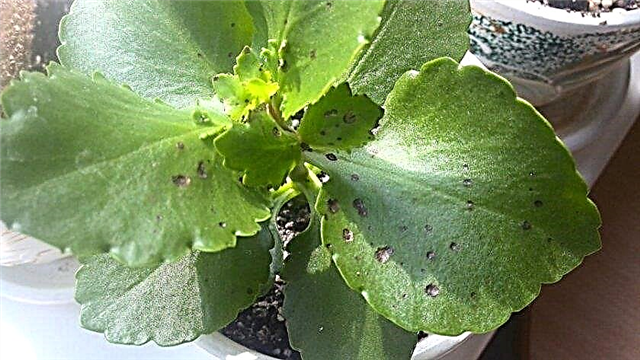
- Powdery mildew. If the foliage is covered with a white powdery coating, then the flower is infected with powdery mildew. In the case of inaction, the leaves will inevitably begin to fall off. Effective treatment with fungicides such as Skor, Tilit, Topsin, Fundazol, Quadrice. Natural preparations (Gamair, Planzir, Fitosporin-M) also have a good effect. Powdery mildew can also be combated with folk remedies: spray the plant with a mixture of soda ash and soap with soda or wood ash mixed with boiling water and grated laundry soap.

- Gray rot. It appears gray plaque and wet spots on the green part. The disease usually spreads to neighboring flowers. Kalanchoe requires treatment with a bacterial drug (for example, Alirin-B or Planriz). An effective folk remedy is spraying with a solution of potassium permanganate (2.5 g diluted in 10 liters of water). Perform several treatments at intervals of 7–8 days.

How to protect Kalanchoe from falling leaves?
To prevent drying and falling of foliage in Kalanchoe, observe preventive measures and exclude provoking factors.
Light intensity
Blooming Kalanchoe should be provided with good lighting. But at the same time, avoid exposure to direct sunlight. Arrange the flower on windows facing east or west. And after blooming for about 2 months, keep the pot in the shade, but not in complete darkness.
Important! Do not place Kalanchoe close to the window pane. Glass reflects the sun's rays and is able to burn leaves.
Maintaining normal temperature and humidity
It is equally important to observe the temperature regime required for Kalanchoe and a sufficient level of air humidity. In summer, the ideal temperature is +18 ... + 20 ° С, and in winter - +14 ... + 16 ° С. Make sure that the room is not damp or too dry. If the air is too dry, it is advisable to use humidifiers or periodically spray water on the flower.
Proper watering
The soil under the Kalanchoe should not be excessively wet, try not to fill the flower. Carry out the next watering only when you notice that the soil is dry. In the warm season, hydration should be more frequent than in the cold season. Water only with well-maintained soft water.

Finally, here are a few more important tips from professional gardeners regarding the prevention of leaf fall in Kalanchoe:
- feed the flower with complex mineral fertilizers immediately after flowering;
- do not apply too much nitrogen fertilizer to the ground;
- disinfect the substrate before planting;
- so that the plant has the opportunity to actively develop, transplant it in time into a larger pot;
- when working with soil, use only clean tools;
- take care of a well-ventilated room for the plant;
- inspect the plant from time to time for the presence of parasites in order to take timely measures to combat them (pay special attention to the back of the leaf plates).
Important! An important role is played by the care of Kalanchoe in the autumn-winter period. Even minor deviations from the rules at this time are fraught with dropping foliage.
Drying and falling of leaves in Kalanchoe is a serious problem, which can be dealt with only by clearly defining the cause of the phenomenon and taking the necessary measures. Following the above recommendations, you will quickly cure the plant, and it will again begin to delight with its flowering appearance.






